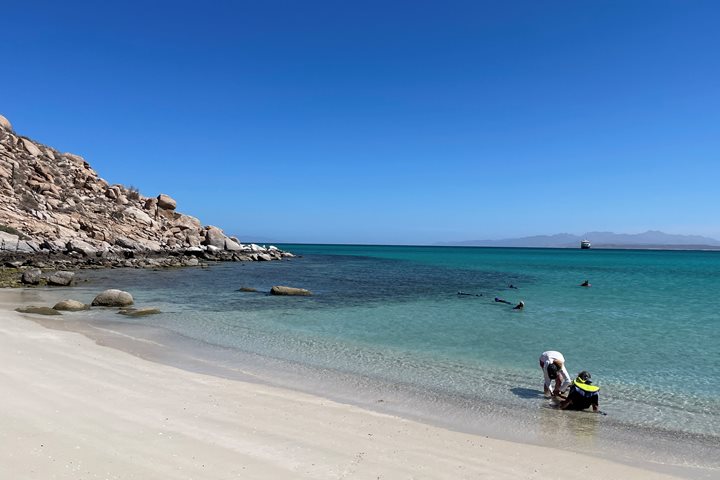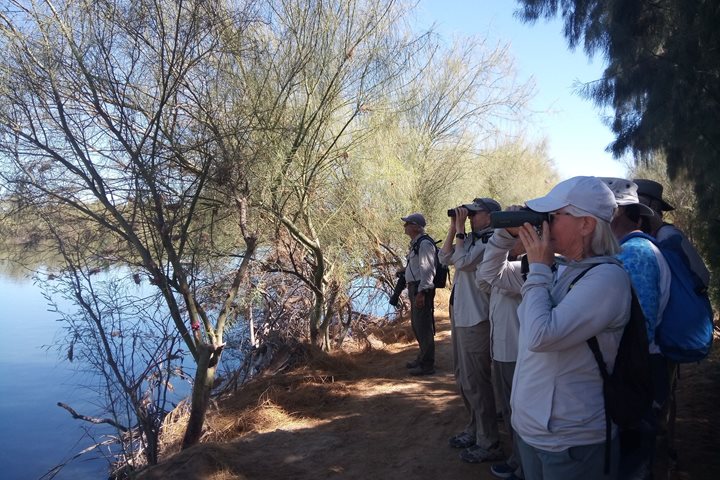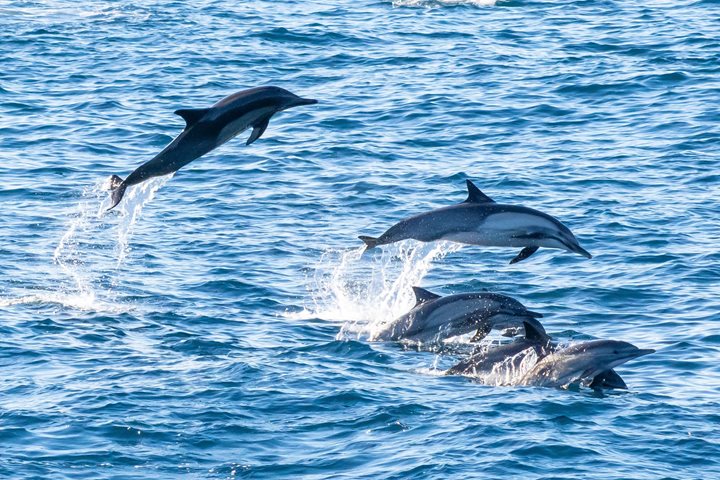Having visited the Sea of Cortez for all of the last 35 years’ travel, what most keeps me returning year after year are days like this! It began in a not-so-unusual way, with bottlenose dolphin bow riding National Geographic Venture. Before breaking for breakfast, there were short-finned pilot whales spotted in a large pod traveling with ease along the surface. A welcoming start for today’s voyage.
With breakfast had and spirit for exploration on the rise, we boarded our Zodiacs positioned for Isla San Marcos. There at shore, groups divided between inland hikes through the Sonoran Desert while others re-boarded the Zodiacs for panoramic views of the island’s stark terrain. After enjoying a myriad of sea birds as well as basking California sea lions, we once again found the same pod of pilot whales—this time they seemed intensely curious about our small inflatable boats!
One should never underestimate the curiosity of wildlife. Happening upon these whales a second time means they followed National Geographic Venture from deeper waters of the early morning to the coastal waters off the north shore of Isla San Marcos!
Perhaps as many as a hundred of these beautiful cetaceans rolled and frolicked around us. Spouts came up from all angles—completely enveloping us in this moment—and we truly were the object of the whales’ curiosity. Minutes turned to hours, and the hikers ashore were brought out to share this experience. Truly we can say it was a whale of a morning!
In the afternoon long-beaked common dolphins escorted the ship to the picturesque town of Santa Rosalia, on the Baja Peninsula. This small Mexican mining town retains the French influence that originally built the community around the land’s large copper reserves. The architecture here is set apart from any other builds across Baja; there is even a church designed by Gustav Eifel in the city center.
With experiences as distinct and memorable as Santa Rosalia’s architecture, it is fair to say this day will be one for the books.









